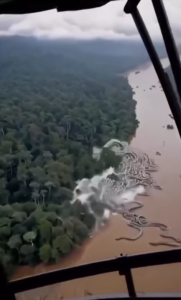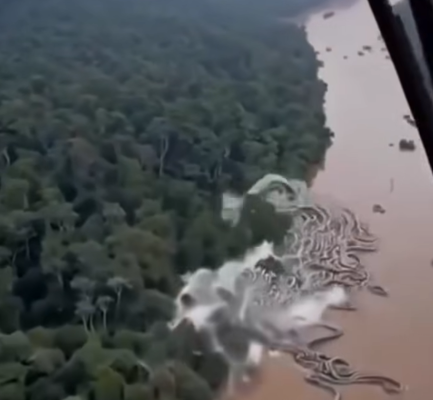
From the dawn of cinema, filmmakers have been drawn to the unknown—the mysterious, the unexplainable, and the creatures that lurk just beyond the reach of science. “Mystery in the Shadows: The Films That Explore Creatures Science Can’t Explain” dives deep into this fascination, tracing how humanity’s greatest fears and curiosities have been brought to life on screen. From ancient myths to modern horrors, these films challenge what we think we know about nature, evolution, and the limits of scientific understanding.
The mystery of unexplained creatures—sometimes called cryptids—has always captivated audiences. Stories of the Loch Ness Monster, Bigfoot, the Mothman, or beings from other dimensions have fueled imaginations for centuries. Movies that explore these beings don’t just aim to scare—they ask questions about our place in the world, about what might exist in the dark corners of our planet, and about the arrogance of assuming science has all the answers.
Early cinema played a major role in shaping this fascination. In 1933, King Kong captured the world’s attention with its tale of a gigantic ape discovered on a remote island. The movie was groundbreaking not just for its special effects but for its central theme: that nature still holds mysteries too vast and powerful for humans to control. Scientists in the film try to study and exploit Kong, only to unleash tragedy—a warning echoed through generations of creature features that followed.
A few decades later, during the 1950s, America’s obsession with science and nuclear power inspired a new wave of monster films. The Cold War era gave birth to creatures mutated by radiation—giant ants in Them!, enormous lizards in Godzilla, and other unnatural horrors born from mankind’s own experiments. These films reflected societal fears that science, while powerful, might also lead humanity into chaos. The monsters weren’t just beasts; they were metaphors for our hubris. In the shadow of scientific progress, they reminded us that we might create what we cannot understand—or destroy.
By the 1970s, a different kind of mystery emerged. The line between science fiction and horror blurred as filmmakers began exploring more psychological interpretations of the unknown. The Thing (1982), a remake of an earlier film, introduced a shapeshifting alien that could mimic any life form. Here, the terror wasn’t just the creature itself, but the paranoia it caused among humans who could no longer trust one another. Science, instead of providing answers, deepened the mystery. Every test, every theory failed to explain the nature of the monster. The message was chilling: some things may simply defy explanation.
In parallel, the rise of documentary-style horror and found-footage filmmaking brought the mystery even closer to home. The Blair Witch Project (1999) changed the landscape of cinema by presenting the story as if it were real footage recovered from missing filmmakers. Its power came not from showing the creature but from not showing it—from letting the imagination fill in the gaps. The film revived the primal fear of the unseen, the idea that something ancient and unexplainable could exist right outside our vision.
More recently, films like Annihilation (2018) and Underwater (2020) have pushed this theme into new territory. Annihilation, adapted from Jeff VanderMeer’s novel, explores a mysterious zone where biology itself behaves differently—mutating plants, animals, and even humans. The scientists who enter the area are forced to confront a world that doesn’t follow the rules of physics or biology. The more they analyze, the less they understand. It’s a stunning representation of how science meets its limits when faced with the truly alien. The creatures inside this shimmering world aren’t evil—they simply exist beyond human comprehension.
Another key example is The Shape of Water (2017), which reimagines the classic “creature from the lagoon” trope as a love story. Guillermo del Toro’s masterpiece blends horror, romance, and myth, presenting the monster as something misunderstood rather than monstrous. The film asks whether the real threat is the unknown creature or humanity’s fear and cruelty toward it. It suggests that what science can’t explain might not be meant for dissection or study, but for compassion and wonder.
These films share a common thread: the idea that mystery itself has value. In a world where technology can map the ocean floor and decode DNA, there’s something hauntingly beautiful about the notion that not everything can—or should—be explained. The unknown keeps us humble. It reminds us that the universe is vast, that there are still dark forests and deep oceans where life might take unimaginable forms. Science thrives on discovery, but art thrives on the spaces science can’t yet reach.
Even outside of fiction, documentaries and mockumentaries have played with this theme. Movies like The Mothman Prophecies (2002) or Trollhunter (2010) use realism and folklore to blur the line between belief and skepticism. They explore how people react when confronted with the inexplicable—some seek evidence, others faith. Whether or not these creatures exist becomes less important than what they represent: the human need to find meaning in mystery.
Modern audiences continue to be fascinated by films that explore creatures science can’t explain because they speak to something timeless in us. We are explorers by nature, drawn to the edges of maps labeled “Here Be Dragons.” The monsters we imagine often reflect the questions we haven’t yet answered. What lies beneath the surface of the ocean? What lives deep in the forests we’ve never entered? Could other dimensions exist beyond what our senses perceive? Each generation invents its own myths to fill the gaps that science leaves open.
Technology has only deepened that fascination. With the rise of AI, genetic engineering, and deep-sea exploration, new films are beginning to ask whether we might soon create the next generation of “unexplainable creatures.” In some sense, we are becoming the mystery ourselves—tampering with the code of life, blending biology and machine. Movies like Splice (2009) and The Creator (2023) continue that tradition, presenting beings that exist outside nature, forcing us to question whether science’s power has gone too far.
Ultimately, “Mystery in the Shadows” isn’t just about monsters—it’s about humanity’s relationship with the unknown. These stories endure because they express both our curiosity and our fear. We want to know what’s out there, but we’re terrified of what we might find. Each film is a mirror, reflecting our struggle between reason and imagination, between control and chaos.
In the end, the creatures that science can’t explain remind us of one essential truth: that mystery is not our enemy. It’s a part of who we are. Without mystery, there would be no discovery, no art, and no wonder. The shadows on the edge of science aren’t empty—they’re full of possibilities waiting to be seen, even if we never fully understand them.
And that’s why filmmakers keep returning to these dark, mysterious corners of storytelling—because sometimes, the most powerful truths are found not in the light of understanding, but in the beautiful, eternal unknown.

